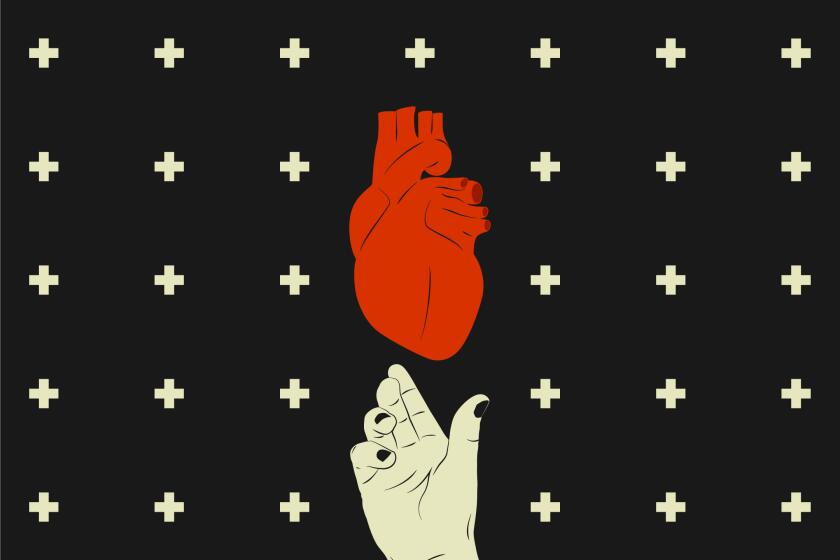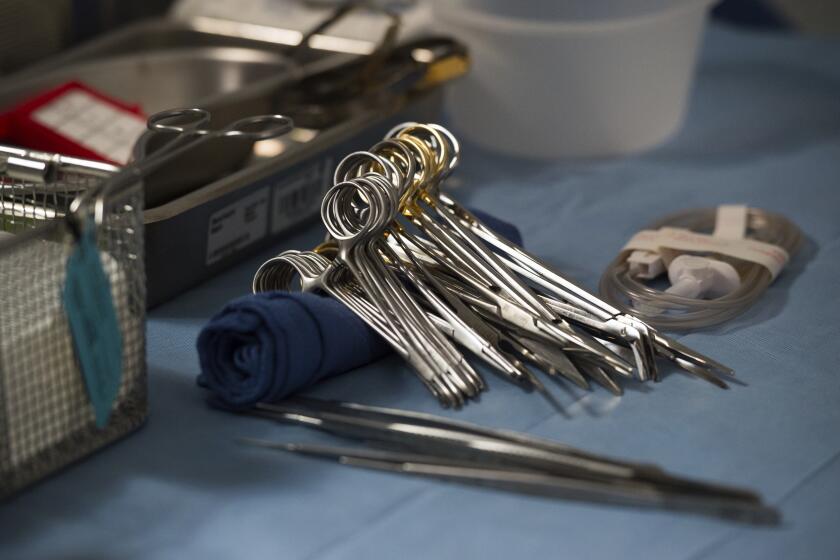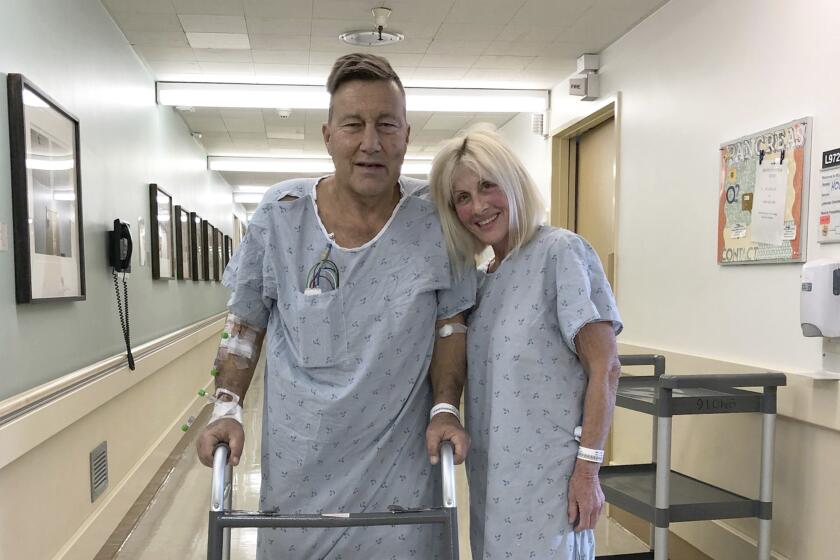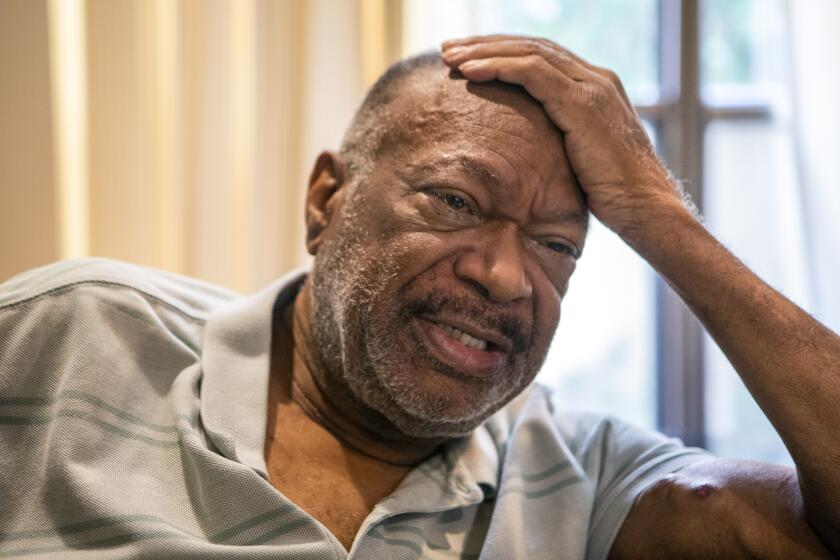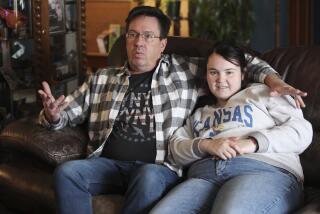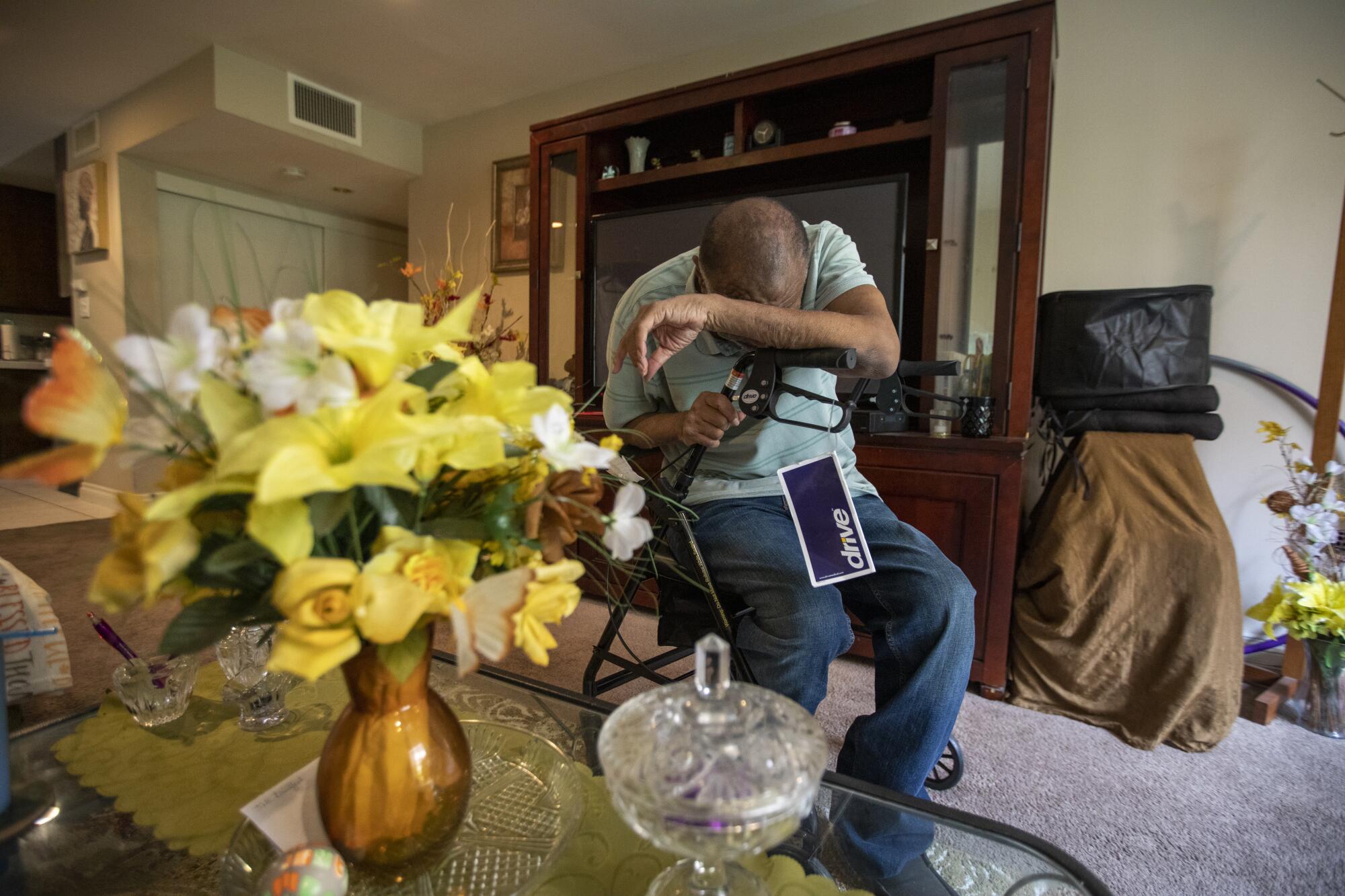
As her kidneys faltered, one woman was turned away from a transplant center in Maryland, which told her she was not a good candidate for a coveted organ.
Months later, she was recovering from surgery in New York City, where another transplant center had accepted her after she sought out another doctor and raised money for the trip.
In New York, a single mother said she was initially told she was “such a good candidate,” only to eventually hear that she needed a reliable vehicle to get to the many appointments required to clear her as a kidney transplant candidate — something she could not afford.
And in Los Angeles County, a 73-year-old man lamented that he spent more than a year and a half waiting on Keck Medical Center of USC — just to hear back about whether he could get onto the waiting list. Frustrated, he turned to another center, only to be thwarted by his insurance carrier as the center was nearing a decision.
He has been stuck heading three days a week to dialysis, the tedious process of pumping out his blood, filtering it and piping it back into his body.
It has felt, Roland Coleman said, like being “a trapped animal.”
To even have a chance at a kidney from a deceased donor — a lifesaving resource in limited supply — an ailing patient needs to get onto the waiting list.
But a shrinking share of Americans undergoing dialysis have been getting that chance, national data show. Their odds have been disturbingly shaped by race and income, researchers have found.
About half the U.S. population, including 18 million Californians, are registered organ donors. But whether you can actually donate organs depends on how you die, among other limiting factors.
And unlike many other steps in the transplant process, which are closely tracked and publicly reported, there is little information readily available about what is happening at each transplant center before a kidney patient is waitlisted — a vacuum that leaves patients and the public in the dark about those crucial decisions.
“It’s a huge problem,” said Dr. Sumit Mohan, a professor of medicine and epidemiology at Columbia University. “We have no idea, nationally, what proportion of patients are actually being referred to transplant centers. We have no idea what proportion actually make it into the transplant center.”
Transplant centers do not have uniform criteria for deciding whom to waitlist, “and there is no transparency in terms of how selective a transplant center is — what proportion of people referred to them do they evaluate and what proportion do they actually accept?” Mohan said. “That’s an impossible task for patients to find out.”
Less than 13% of kidney patients undergoing dialysis were on the waitlist in 2020, compared with more than 17% a decade earlier, according to data from the United States Renal Data System, which tracks information about kidney disease. Even among patients who appear to be prime candidates for transplant, more than half did not get onto a waitlist before or within three years of starting dialysis, one analysis found.
Black patients have been repeatedly found to be less likely to be waitlisted than white ones, even in wealthy neighborhoods and even after adjusting for medical and social factors. Researchers have also found that poorer patients and those using public insurance are less likely to get onto waitlists.
Without clearer information about who is getting onto the waitlist and who is not, it is impossible to address disparities in who gets donated organs, experts have argued.
Much of the national debate has revolved around how organs are allocated to waitlisted patients, but far less attention has been devoted to the barriers to getting waitlisted at all, said Keren Ladin, a Tufts University associate professor who heads the ethics committee of the Organ Procurement and Transplantation Network.
Ladin likened the situation to deciding who gets into the few lifeboats on the Titanic. “If all of the rich white people are in the lifeboats,” she said, “that’s pretty problematic.”
An influential scientific advisory panel says the U.S. transplant system needs an overhaul to stop wasting organs and give more patients a fair chance.
Despite concerns about inequities, experts say that the complex decisions about whom to waitlist cannot be boiled down to a standard and inflexible checklist. Across the country, more than 200 medical centers perform kidney transplants. Some may have technical capabilities to take on riskier patients than others.
Those center-by-center decisions put patients onto a national waitlist, but patients can also register with more than one center, which can improve their chances of getting a transplant if they are far enough apart to be offered different kidneys.
Kidney demand vastly exceeds supply
With demand for donated organs far exceeding the supply, getting onto the waitlist is no guarantee of getting a kidney. Thousands of people die annually on the waitlist for a kidney transplant.
Nationally, less than a third of patients waitlisted in 2018 got a kidney from a deceased donor within three years, according to data from the Scientific Registry of Transplant Recipients.
If a 70-year-old does not have a living donor to help them, “there’s really not much point in putting them on the transplant list, because he’s going to have to wait ... and the truth is they may not live that long,” said Dr. Gabriel Danovitch, medical director for the Southern California organ procurement agency OneLegacy as well as for the UCLA kidney and pancreas transplant program. Danovitch instead urged more attention to the need for living donors.
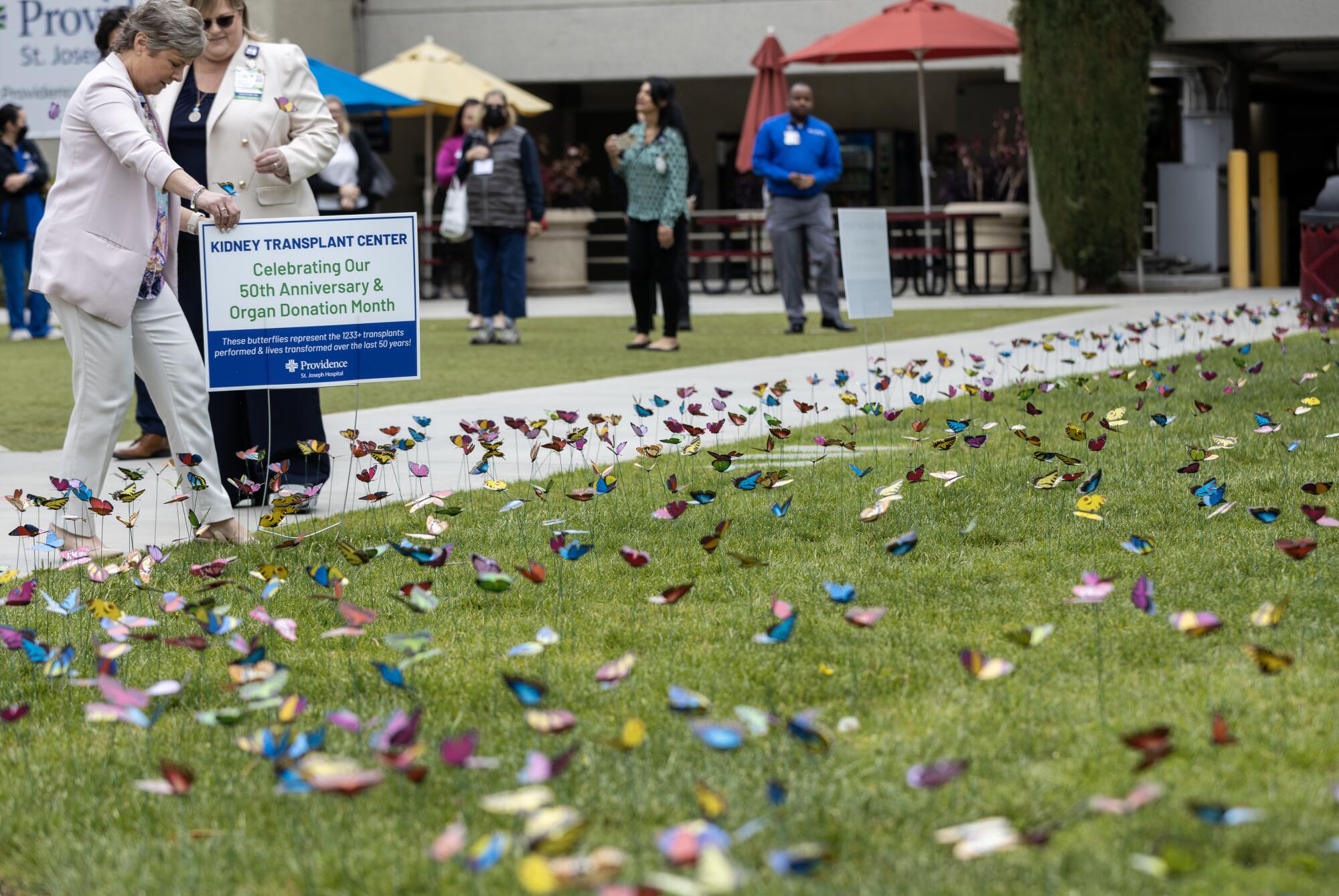
Others argued that if the U.S. had a clearer picture of the number of viable candidates who never make it onto a waitlist, that could pressure key players in the organ donation system to seek solutions. Among them: reducing how many donated organs are not being used.
“Is it acceptable that 25% of kidneys are being discarded? Is that OK with you?” Sen. Ron Wyden (D-Ore.) asked the chief executive of the United Network for Organ Sharing, the nonprofit managing the U.S. organ transplantation system, at a Senate committee hearing in August.
“No, Senator, absolutely not,” then-CEO Brian Shepard replied.
If the kidney waitlist suddenly doubled, the number of discarded organs would probably drop, argued Jesse Schold, a professor in the departments of surgery and epidemiology at the University of Colorado Anschutz Medical Campus. “The urgency would be that much higher.”
Federal officials recently announced that they would overhaul the transplant system and seek out more than one group to manage it, ending the monopoly that UNOS has held over the transplant network for decades. A Health Resources and Services Administration spokesperson said one of their goals is collecting data about patients before they reach the waitlist.
Wildly differing referral rates
Some kidney patients are never even referred to transplant centers by doctors or dialysis centers, despite being possible candidates: In one study of dialysis centers in the Southeast, referral rates were wildly different from one facility to another — ranging from 0% to 100% of patients being referred within a year.
“I’m still seeing patients that have been on dialysis for seven, 10, even 15 years, who say, ‘Oh yeah, I just had a conversation about transplant,’” said Dr. Dinee C. Simpson, a transplant surgeon who runs the Northwestern Medicine African American Transplant Access program in Chicago.
Federal regulators have started tying some funding for dialysis centers to the percentage of patients who get onto the kidney transplant waitlist, nudging them to refer more patients to transplant centers. But whether a patient makes it onto the waitlist can also hinge on which transplant center is scrutinizing them as a candidate.
Dee Griffin, 53, was told by a Maryland center that she was not a transplant candidate five years ago because she had a “pattern of non-compliance,” among other issues, medical records show. She found that absurd, pointing out that at the time she was undergoing home dialysis, a process that requires patients to diligently adhere to the treatment.
Organ transplants plummeted as the coronavirus spread. Doctors in the U.S. and France cut way back on the procedures to avoid putting living donors at risk.
Instead, she believes the decision had more to do with the doctor in charge, whom Griffin said she had asked to replace during an earlier hospital visit because he disregarded her input.
After being turned down as a candidate by the Maryland center, Griffin sought out another doctor who had treated her in the past. Three months and five days after being turned down as a candidate in Maryland, she got a kidney transplant from a New York center.
“Imagine if I just accepted what this man said,” Griffin said, “and went home to die.”
Rachel E. Patzer, director of the Transplant Health Services and Outcomes Research Program at Emory University, has worked to gather information about waitlisting from dozens of transplant centers. Thanks to that legwork, she and other researchers discovered that some transplant centers have been twice as likely as others to put patients on the waitlist. But without such information being collected and released nationally, it is impossible for a patient to know how their chances differ from center to center.
Crucial differences in waitlisting criteria can also be invisible to patients. Kidney transplant centers are unlikely to waitlist patients with medical conditions that plainly jeopardize their chances of surviving surgery, but many other decisions can differ.
Under federal Medicare and Medicaid regulations, transplant centers are required to have written criteria that ensure “fair and non-discriminatory distribution of organs,” but the rules do not specify what those criteria should include. Some waitlisting criteria may be defined as “absolute,” while others are “relative,” meaning they are not automatic deal-breakers.
A kidney patient might be deemed too obese to get waitlisted at one center, but make the cut at another. In California, transplant programs also have different guidelines around whether they will waitlist elderly patients, a Times review found. And some insist patients stop using drugs or alcohol for months before waitlisting, while others only frown on “active” use.
As an ailing patient, “when you’ve got limited time and capability to navigate all of this, who helps you figure that out?” said LaVarne Burton, president and chief executive of the American Kidney Fund.
Transplant centers can also weigh murkier factors such as “social support,” which ethicists have warned there is no uniform way to assess. The Organ Procurement and Transplantation Network ethics committee cautioned that non-medical criteria have been inconsistently applied and are susceptible to stereotyping.
Financial issues can also factor in, as transplant centers consider whether patients can afford their expenses as they recover.
Bethany Edwards, 44, is a single mother who said she has been on disability payments for nearly two decades because of her kidney disease. One center turned her down, saying that she wasn’t financially stable and didn’t have enough help for after the surgery, Edwards said. Another center told her, after she had struggled to make it to medical appointments that were needed to assess her, that she needed to have a reliable vehicle of her own if she was going to continue with the process, Edwards said.
“I get they don’t want me to waste their time” by not making it to appointments, Edwards said. “But it’s also just not realistic.”
She used to clean houses and babysit, but found it impossible to juggle work with the demands of dialysis at least three times a week.
Some California programs declined to provide waitlist criteria to The Times: Scripps Green Hospital in La Jolla called them “proprietary,” but said it does provide them to patients. Sutter Health declined to provide specific criteria for California Pacific Medical Center Van Ness, as did Riverside Community Hospital, Loma Linda University Medical Center and Cedars-Sinai.
Insurance delays and logistical holdups
The National Kidney Foundation has urged waitlist criteria to be made more transparent to patients so that people can go where they have the best shot, especially if their health insurance limits how many evaluations they can undergo. Federal regulations say transplant programs must provide their selection criteria to patients upon request, but advocates say many patients are unaware that they can do so.
The evaluation process, which can require numerous assessments, can be slowed at many points by insurance authorizations and other logistical holdups. The steps can also be confusing enough that in some cases, patients have mistakenly believed they were already waitlisted while still undergoing evaluation, researchers have found.
“One little test could not be performed and you didn’t get the memo — and that could be preventing you from getting on the waitlist,” said Lori Hartwell, founder of the Renal Support Network.
And despite the high stakes of getting a kidney transplant, there is no requirement for transplant centers to assess candidates for the waitlist within a specific amount of time.
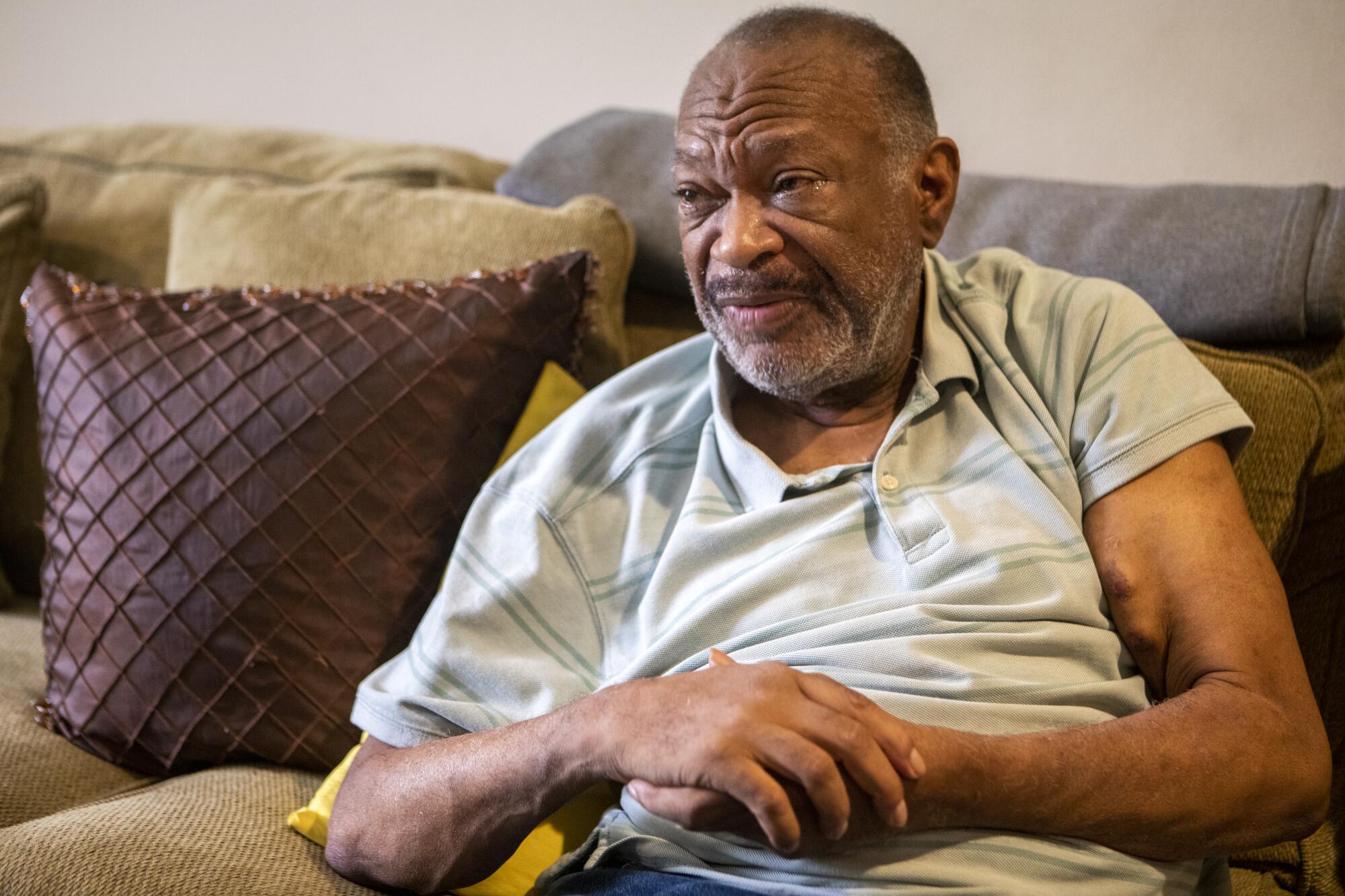
In Los Angeles County, Keck Medical Center of USC had indicated the process could take up to six months, but it wasn’t until last August — more than a year and a half after his initial orientation — that Coleman was initially told he was too “high risk” to be a transplant candidate at that time, although it could reconsider if he took some additional steps.
Keck said it had reached out to ask Coleman for needed records before its August decision. Coleman, however, said he hadn’t been asked to provide specific documents until that fall, and complained that “I have lost over a year during this tenuous period in my life.”
The 73-year-old also disputed Keck’s claims about his medical condition, pointing to information in its records. Frustrated, Coleman turned to another program for help. Roughly five months after he was connected to Providence St. Joseph, Coleman was eagerly anticipating its decision on whether he could get onto the waitlist.
Then he was thwarted again, this time by his health insurance company.
It said the Providence transplant center was not in its network, despite having initially authorized him to go to that hospital.
More than two years have passed since Roland Coleman, a seasoned attorney, started trying to get onto the kidney transplant waitlist.
Closing racial equity gaps
Across the country, the waitlisting rate fell after the rollout of key changes in the kidney allocation system, researchers have found. Among them: Waiting time is now calculated based on when kidney patients started dialysis, not when they got onto the waitlist.
The changes have been credited with closing gaps between Black, Latino and white patients getting transplants once they’re on the waitlist, but researchers have suggested they may have lessened the sense of urgency to waitlist patients who just started dialysis.
Danovitch, asked about the decline in waitlisting, said there could be a greater proportion of people who have too many medical problems to undergo transplant. Schold disagreed, saying that although the precise number of kidney patients eligible for transplant is unknown, there is clear evidence that eligible patients are being bypassed.
Mohan argued that because the regulatory system has monitored transplant centers for getting the best outcomes after an organ is transplanted, but never tracked how many patients are shut out from the waitlist, the system has grown increasingly selective, focused on delivering the best results to the lucky few who are waitlisted and chosen for transplant, rather than maximizing the benefits for as many patients as possible.
At the same time, more donated kidneys are not being used. UNOS researchers previously found that much of the rise in discards over decades is due to an expanded pool of kidney donors, but their results also suggested that “a significant number of opportunities for kidney transplant are missed.”
More to Read
Sign up for Essential California
The most important California stories and recommendations in your inbox every morning.
You may occasionally receive promotional content from the Los Angeles Times.
